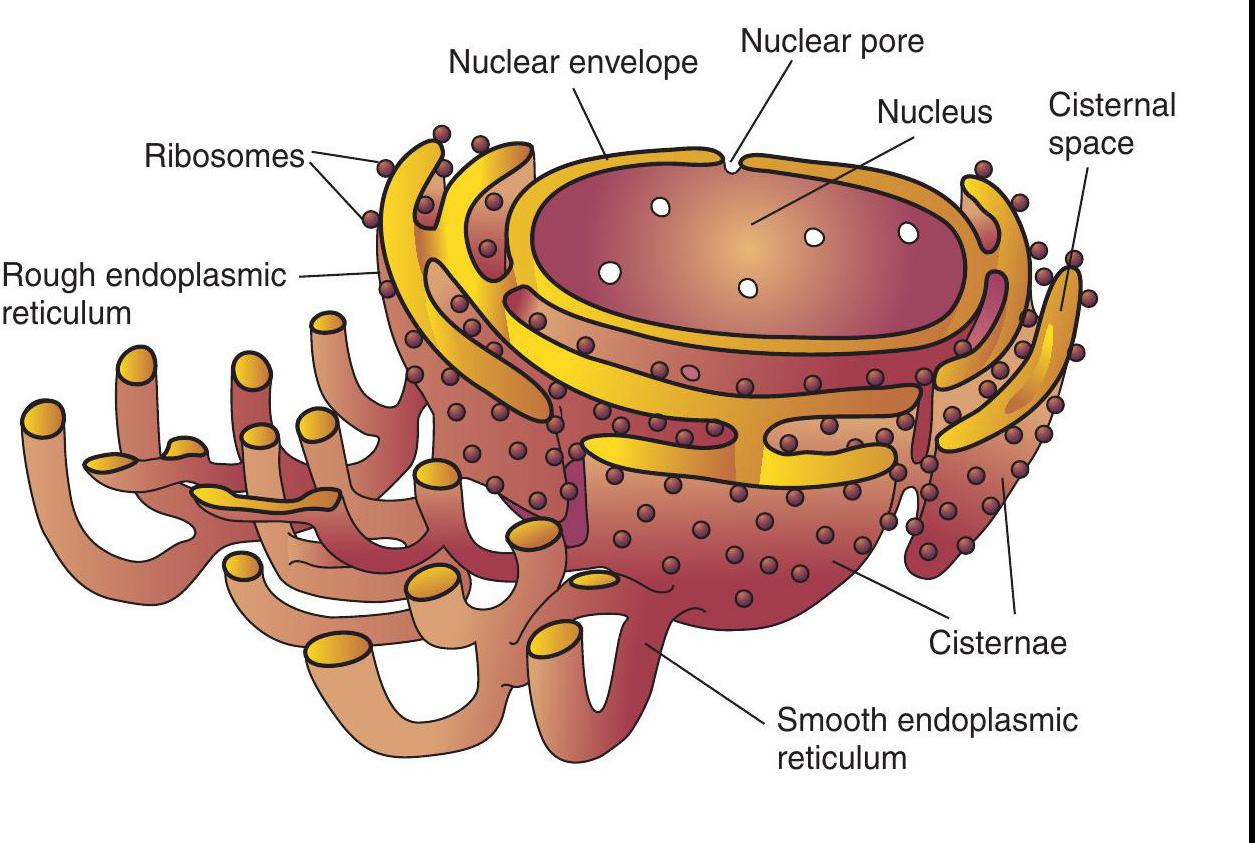
The cells of bacteria have no nucleus and no membrane-bound organelles — bacteria are prokaryotes. All other (eukaryotic) cells do have a nucleus and an assortment of other organelles bounded by membranes, including mitochondria, lysosomes, nuclei and endoplasmic reticulum. These organelles are separated from the cytoplasm by their membranes, effectively dividing the cell up into compartments, but some are not as separate from each other as they seem at first sight.
The endoplasmic reticulum (ER) is an extensive membranous network of interconnected tubules and sacs (see Figure 1). It can only be seen using a transmission electron microscope. When the ER was first discovered, biologists thought that the sacs and tubes were invaginations of the plasma membrane that extended deep into the cytoplasm. This would have greatly increased the surface area of the cell. However, no micrograph eve rshowed a connection between the ER and the plasma membrane. What did show up were clear connections between the nuclear membrane and the ER. The nuclear envelope is now recognised to be an extension of the ER (see Figure 2).
Your organisation does not have access to this article.
Sign up today to give your students the edge they need to achieve their best grades with subject expertise
Subscribe




